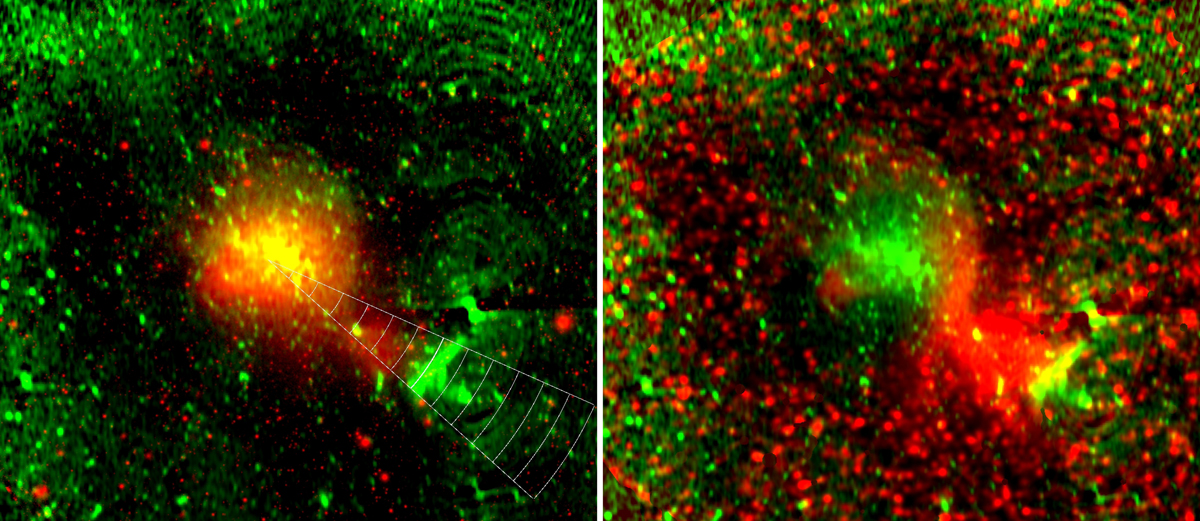Fig. 3.

Download original image
Composite X-ray and radio images, similar to Fig. 2, except for radio data, which are from the WSRT observations at 325 MHz (Brown & Rudnick 2011). Left panel: original images are used. The yellow color in the center reflects the co-spatial X-ray and radio cores of Coma. The red region to the SW of the center corresponds to the dense gas of the NGC 4839 group. The radio source NGC 4839 is seen as a bright green or yellow patch that is ∼40′ from the center. Further to the SW, a bright green region at 70 − 80′ from the core is the radio relic. A wedge containing the relic is shown in white color with 10′ steps in radius. Right panel: the X-ray image is divided by the best-fitting beta model (plus sky background) to emphasize the faint structure beyond the NGC 4839 group and near the relic. In this image, a red spot that is 20 − 30′ to the SE of the core corresponds to the radio quiet area associated with a contact discontinuity. To the west of the core, a shock at ∼30′ is seen as a long arc. To the SW from the core, the X-ray bright region extends all the way to the radio relic, which has a mostly yellow color, indicating co-spatial radio and (faint) X-ray emission distribution. A green feature located further to the SW is a tailed radio galaxy NGC 4789.
Current usage metrics show cumulative count of Article Views (full-text article views including HTML views, PDF and ePub downloads, according to the available data) and Abstracts Views on Vision4Press platform.
Data correspond to usage on the plateform after 2015. The current usage metrics is available 48-96 hours after online publication and is updated daily on week days.
Initial download of the metrics may take a while.


